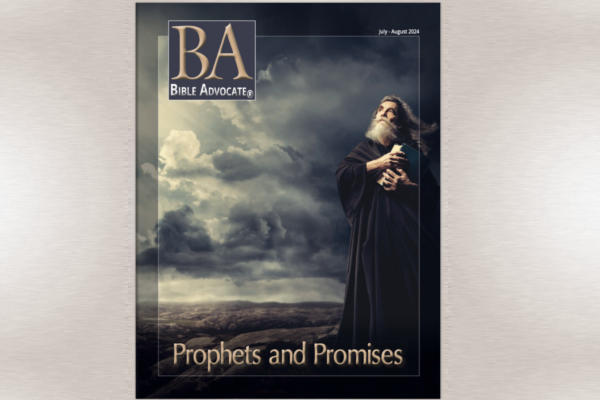Discipleship is one of the most important aspects of the faith, though many parts of Christianity today don’t seem to practice it. Many things might stand in for discipleship: reading a book about a Christian subject, for example, or listening to sermons and going to church each week.
However, though beneficial, these and similar activities are not exactly pure discipleship. Despite their blessings for us, their shared limitation is their broad aim. It is almost impossible for these practices to pinpoint the specific areas we need to grow in and walk us through the change.
This is where personal discipleship comes into the faith, and we see it in three great biblical examples: Moses and Joshua, Elijah and Elisha, and Jesus and His twelve disciples. Three elements shine through in each: shared time, shared presence, and shared ministry.
Shared time
Joshua spent forty years as Moses’ assistant (Numbers 11:28; cf. Joshua 14:7-10)! Though the shared time in the other two examples is shorter, it is still a significant amount of time. Elisha seems to have followed Elijah for about six years (parts of Ahab’s, Ahaziah’s, and Jehoram’s reigns) until Elijah was taken away in a whirlwind (2 Kings 2). Jesus’ disciples followed Him in the flesh for about three years.
The intensity of these examples is how closely these pairs lived together. They surely didn’t limit themselves to once-a-week meetings. Rather, they lived life together for years because effective discipleship takes a lot of time.
This extended time allowed for many opportunities, both formal and informal, to address issues and refine strengths. Elisha stuck like glue to his teacher, and only a whirlwind separated them in the end (vv. 2, 4, 6). Jesus showed His disciples what to do in ministry, and they talked privately about what they didn’t understand (Matthew 13:10-23; 16:5-12; Mark 4:34). Joshua was always near Moses or God (Exodus 33:11).
Consider that God commanded that no one should be found on Mount Sinai, lest they die, and yet we find Joshua taken halfway up the mountain by Moses (Exodus 19:12; 24:1, 12-14). An abundance of time spent between teacher and disciple(s) shows through in these examples.
The question for us today is if students and teachers are willing to take the time to invest in effective discipleship. Our schedules are busy with family, work, and church commitments. But time spent in discipling is critical to bear fruit in students’ lives.
Shared presence
Though this has already seeped into the first point, physical presence is important in discipleship. Despite the benefit of technology to instantly cross oceans through video calls and several other means, the work of discipleship is still best done by occupying the same space. Certainly, discipleship can be done from afar, but even this approach betrays the problem.
From afar has several disadvantages compared to shared space. I’ve been discipled, and have discipled others, through both of these approaches. Students and teachers meeting in person easily, speaking face to face, and working side by side (the third element) is far superior to phone calls, emails, and video calls. There is better supervision, more chances for feedback, and more to be observed for both parties.
In our biblical examples, the disciples witnessed Jesus’ miracles, saw His body language and heard His tone of voice. Joshua witnessed all the trouble Moses went through for forty years. He saw the parting of the Red Sea, fire on the mountain, plagues in the desert, the people murmuring and complaining and rebelling, and all the while saw how Moses handled it. He also observed how Moses approached God’s presence on the mountain and in the tabernacle.
A student who lives near their teacher can witness the ministry personally in any situation — not just the planned, formal moments but the ordinary, everyday moments too. The combination of time spent together (the first two elements) powerfully shapes a disciple and invests in their spiritual growth. This allows the disciple to learn everything they can from the teacher, to ask or be asked targeted questions, and have deep conversations.
Time and presence also allow the teacher the opportunity to observe the things that need to be addressed in the student, things that may never be observed at all in an email or video call-type of discipleship. At a distance, much can be hidden, in both directions, and only what each party wants to show may be displayed during their limited, planned interactions.
Shared ministry
The final element is about doing the work of ministry together. Jesus did not drag around a bunch of spectators; He put His disciples to work repeatedly (John 4:2; Luke 9:1-6; 10:1-20). Joshua and Elisha assisted their masters, serving in ministry roles. Joshua was sent out as a general to lead a battle (Exodus 17:9-13). Ultimately, this prepared Joshua for his major work when he led the Israelites to conquer the Promised Land (Joshua 10:40-42). Elisha traveled with his master and assisted in any way he could (1 Kings 19:21), eventually doing many of the same works and miracles (2 Kings 2:13-15; 4:1-7, 32-37).
Likewise, in discipleship today, the students should eventually be put into proper ministry roles, under the supervision of the teacher. This allows them to move from being an observer of ministry to a doer of ministry.
Given these biblical models and principles, have you been discipled? If you are a mature Christian, are you discipling others? Whether student or teacher, prayerfully approach discipleship and seek the Lord continually in the process. God often works through human hands and hearts to bring about the growth in disciples through teachers who submit to Him.








